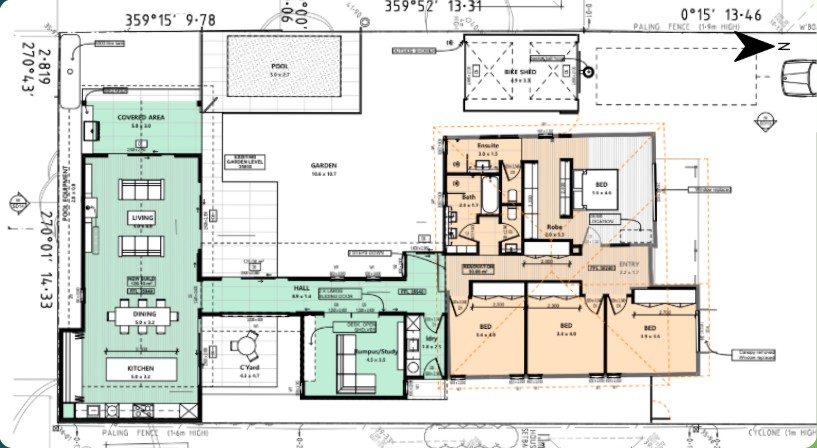Orientation is the unsung hero of good design. Get it right, and your home will feel naturally comfortable all year.

Plan your home around the sun, not against it
If you’re building or renovating a home in Melbourne, there’s one decision that shapes everything else, and it’s not about tiles or tapware. It’s about how your block sits in relation to the sun.
Orientation is the unsung hero of good design. Get it right, and your home will feel naturally comfortable all year. Get it wrong, and you’ll battle heat in summer, gloom in winter, and rising energy bills.
Over the years, we’ve seen countless designs where small orientation tweaks transformed how a home feels. So, let’s explore what makes the best block orientation for passive solar design, and how you can make the most of any site, even if it’s not perfect.
The sun’s path is the most reliable design tool you have. Here in Melbourne, the sun arcs across the northern sky, bringing steady light and warmth. That’s why north-facing living spaces are so valuable — they capture natural light in winter, reduce the need for artificial heating, and create bright, uplifting rooms.
A well-oriented home:
Orientation isn’t about luxury; it’s about livability. The homes that feel “just right” often owe that comfort to the way they’ve been placed on the block.
Every block presents its own opportunities. Whether your street faces north, south, east, or west, smart planning can help you make the most of it.
If you’ve got a backyard facing north, congratulations. You’ve landed the easiest orientation for passive solar design. This setup naturally supports energy-efficient living.
How to design for it:
It’s the classic “light-filled living at the back” setup you’ll see in many sustainable homes across Melbourne.
This one can be tricky because your street frontage is also your solar access. Privacy and sunlight often compete, but good design can solve both.
How to design for it:
We’ve worked on several north to the front homes where the central courtyard solution completely changed how the space felt. Done right, it can be one of the most characterful orientations.
This is one of our favorite orientations. An east-facing frontage means soft morning light at the front and a north-facing side boundary, perfect for side-yard living.
How to design for it:
This orientation suits narrow urban blocks beautifully, the ones you’ll often find across Melbourne’s inner suburbs.
A west-facing block can be challenging because it gets the harshest summer sun. Without protection, it can overheat quickly, especially across the façade.
How to design for it:
While it needs more thought, a west-facing block can still perform well when you prioritise shade and ventilation.
Most sites aren’t perfect, especially in built-up suburbs where orientation is locked in. But that doesn’t mean you’re stuck. There are creative ways to bring in sunlight and improve comfort.
Try these design moves:
Even small interventions can make a big difference. It’s about working with the site, not forcing it to behave like another.
Orientation isn’t just about the house; your garden plays a part too.
Landscaping designed around the sun strengthens the performance of the home and makes outdoor spaces more usable.
After 12 years designing and building sustainable homes across Melbourne, we’ve learned this: the most meaningful homes aren’t necessarily the biggest or flashiest. They’re the ones that were well considered during the design phase and feel just right.
That feeling usually comes from good fundamentals, and orientation is one of them. Get that right early, and everything else, i.e., insulation, glazing, comfort, works better.
A well-oriented home doesn’t just save energy. It supports your wellbeing, connects you with natural light, and adds long-term value.
Before you fall for a floor plan, check how your block meets the sun. Orientation is the invisible hand behind every home that just feels good. When you build with the sun in mind, you create a space that works with nature, not against it: a home that’s efficient, comfortable, and meaningful for years to come.